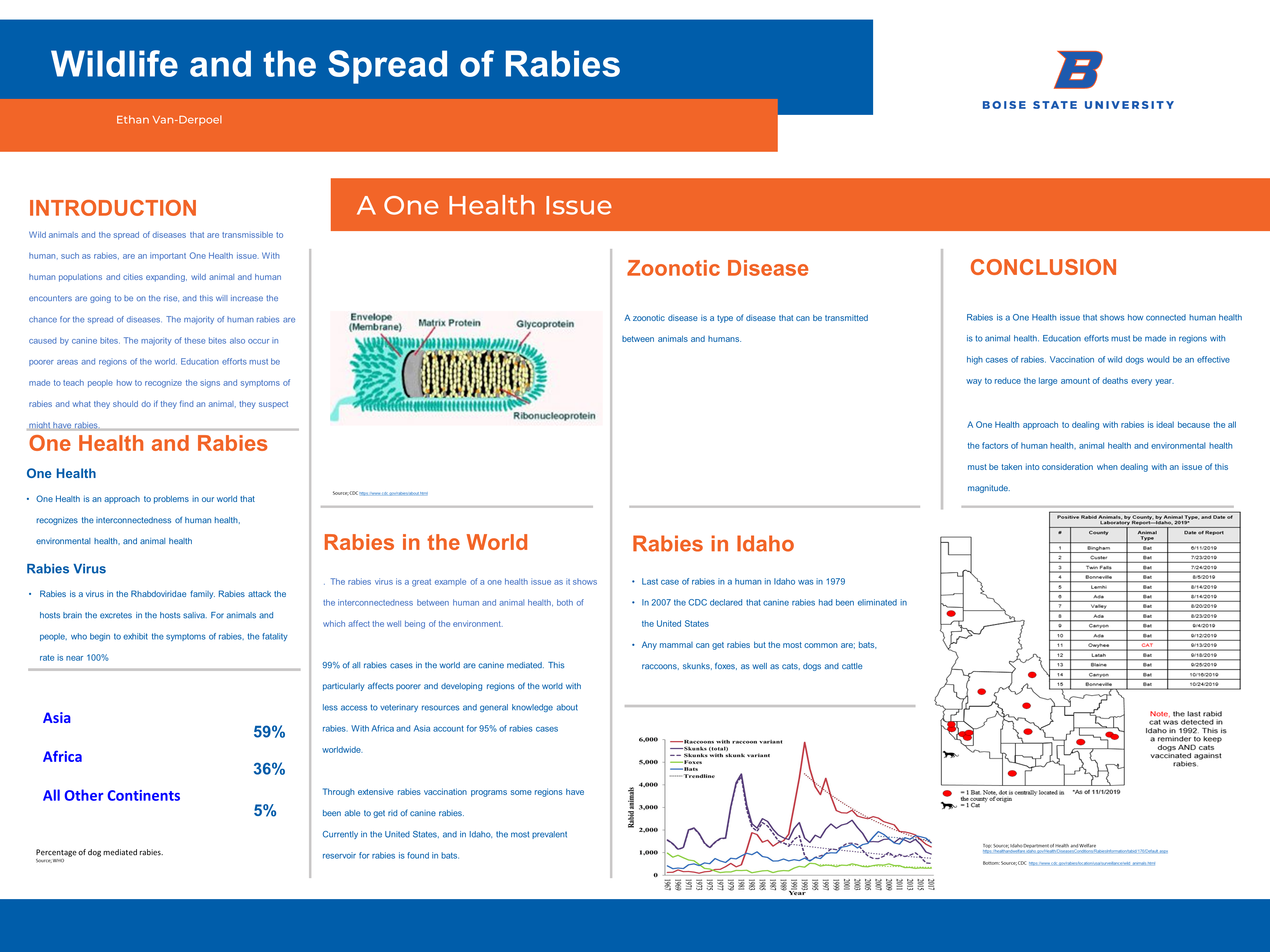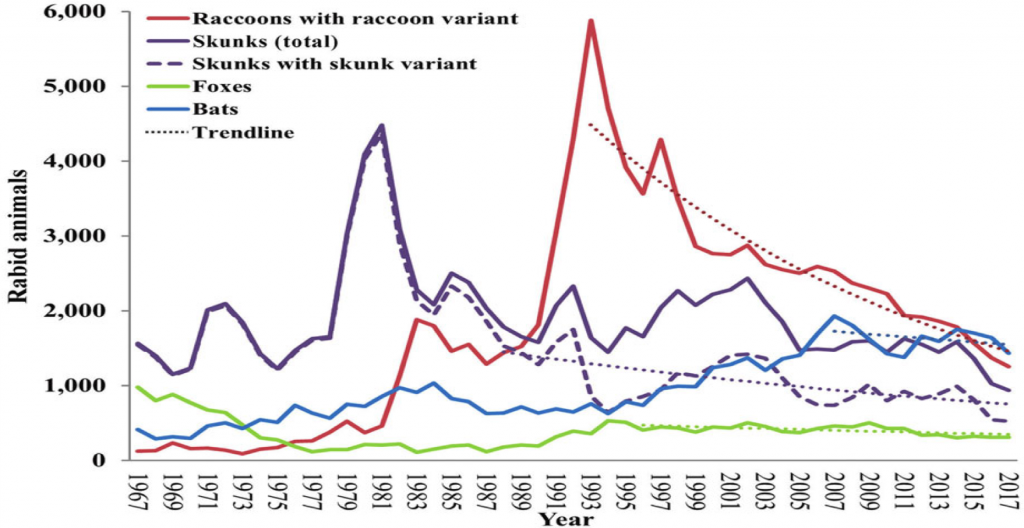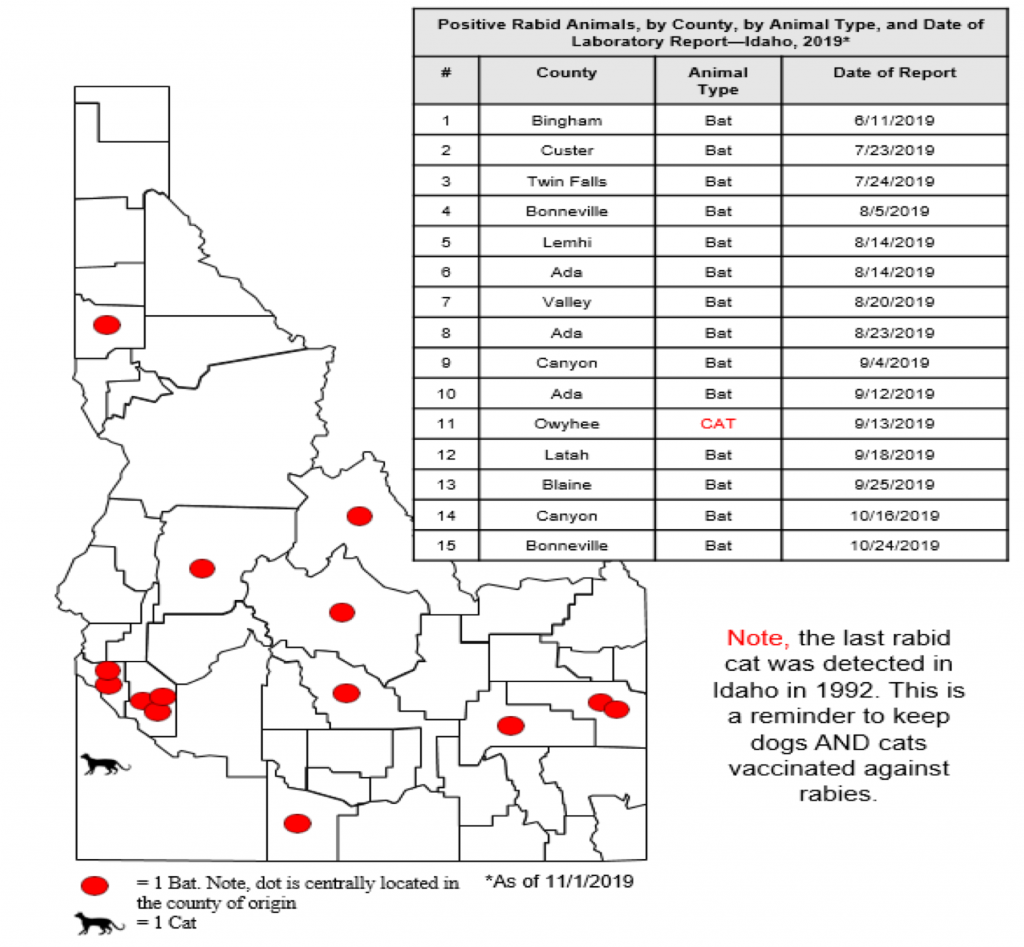Ethan Van-Derpoel, Dr. Jared Romero

Introduction
Wild animals and the spread of diseases that are transmissible to human, such as rabies, are an important One Health issue. With human populations and cities expanding, wild animal and human encounters are going to be on the rise, and this will increase the chance for the spread of diseases. The majority of human rabies are caused by canine bites. The majority of these bites also occur in poorer areas and regions of the world. Education efforts must be made to teach people how to recognize the signs and symptoms of rabies and what they should do if they find an animal, they suspect might have rabies.
One Health and Rabies
One Health
One Health is an approach to problems in our world that recognizes the interconnectedness of human health, environmental health, and animal health
Rabies Virus
Rabies is a virus in the Rhabdoviridae family. Rabies attack the hosts brain the excretes in the hosts saliva. For animals and people, who begin to exhibit the symptoms of rabies, the fatality rate is near 100%
Percentage of dog mediated rabies
According to the WHO, here are the following percentages of dog mediated rabies around the world:
- Asia: 59%
- Africa: 36%
- All Other Continents: 5%

Rabies in the World
The rabies virus is a great example of a one health issue as it shows the interconnectedness between human and animal health, both of which affect the well being of the environment.
99% of all rabies cases in the world are canine mediated. This particularly affects poorer and developing regions of the world with less access to veterinary resources and general knowledge about rabies. With Africa and Asia account for 95% of rabies cases worldwide.
Through extensive rabies vaccination programs some regions have been able to get rid of canine rabies.
Currently in the United States, and in Idaho, the most prevalent reservoir for rabies is found in bats.
Zoonotic Disease
A zoonotic disease is a type of disease that can be transmitted between animals and humans.
Rabies in Idaho
- Last case of rabies in a human in Idaho was in 1979
- In 2007 the CDC declared that canine rabies had been eliminated in the United States
- Any mammal can get rabies but the most common are; bats, raccoons, skunks, foxes, as well as cats, dogs and cattle


Conclusion
Rabies is a One Health issue that shows how connected human health is to animal health. Education efforts must be made in regions with high cases of rabies. Vaccination of wild dogs would be an effective way to reduce the large amount of deaths every year.
A One Health approach to dealing with rabies is ideal because the all the factors of human health, animal health and environmental health must be taken into consideration when dealing with an issue of this magnitude.
Additional Information
For questions or comments about this research, contact Ethan Van-Derpoel at ethanvanderpoel@u.boisestate.edu.